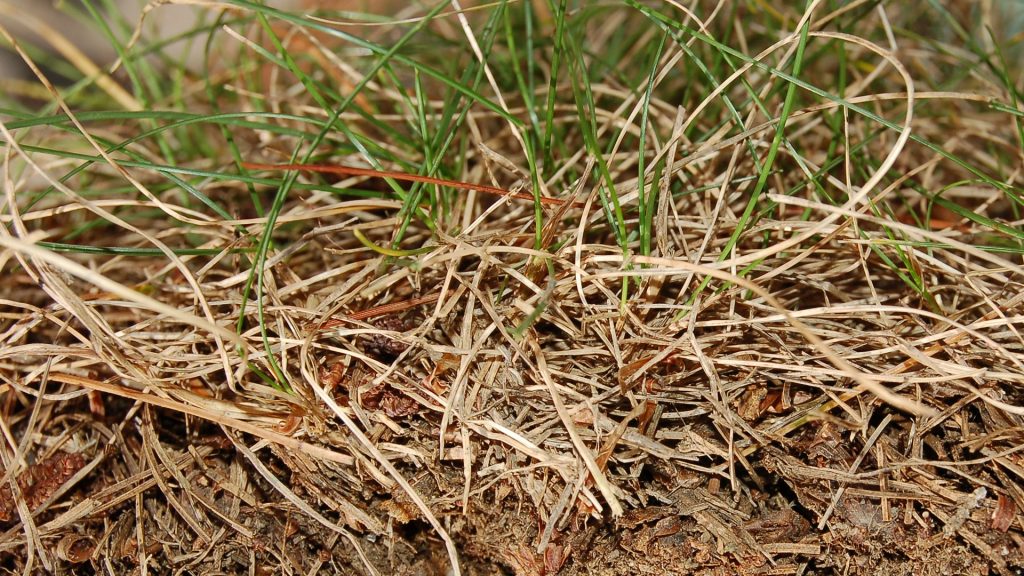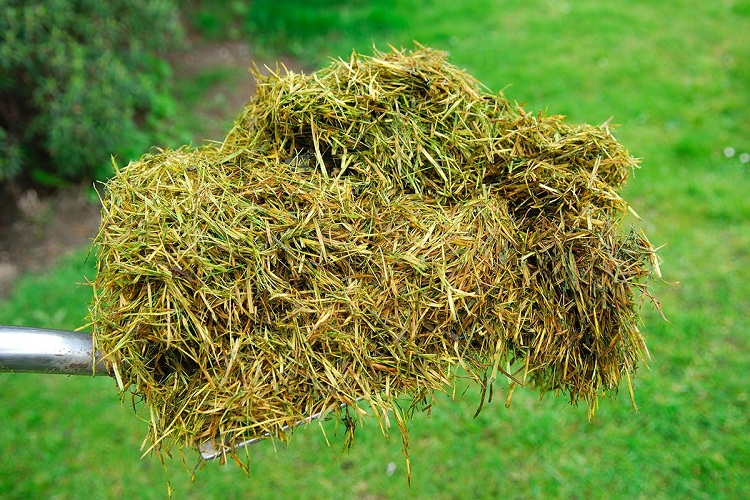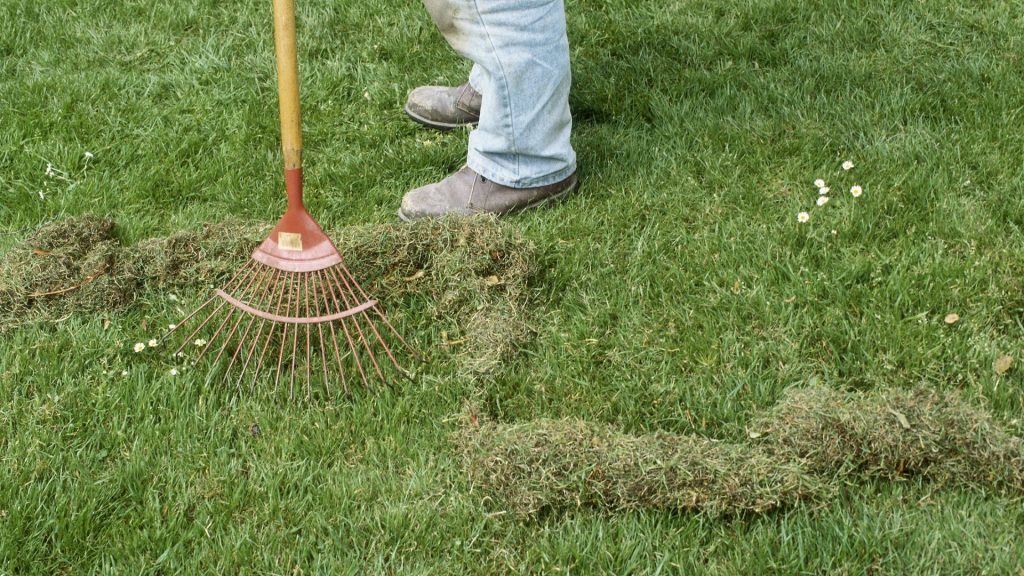
What To Do With Thatch After Dethatching Your Lawn
When you’re growing grass seed in your lawn, you might encounter thatch. This is decaying organic matter that can get in the way of your planting success. Thatch blocks sunlight and oxygen from getting into the soil where it can nourish the grass, so you should remove it.
Does all thatch need to be removed? If you have half an inch or less of thatch, you can leave it intact. It can serve the purposes of insulating your soil against extreme temperatures and retaining its moisture.
If you have more than that, however, it’s time to dethatch your lawn. GreenIQ details how you can do this in the article, “What Is A Power Rake?” Now, the question is: what should you do with thatch you’ve removed?
What To Do With Thatch After Dethatching Your Lawn

When you dethatch your lawn, chances are that the decaying thatch is thrown out into the bin. But there are actually some excellent uses for it that you might not know about. The lawn is all about recycling and reusing the materials so you can make your overall lawn maintenance easier and shorter.
Use it as compost
When you’ve removed thatch from your lawn, throw it into your compost pile. Thatch can be composted, but bear in mind that it will take a bit longer to break down than other debris from the garden.
One of the best ways to compost thatch is to pile it up separately from the rest of the debris and add some soil or finished compost to it, before adding a high-nitrogen fertilizer between its layers. Make sure you water it regularly.
Another way to compost your thatch is to mix pieces of it with your garden debris, such as leaves, and keep it in the compost pile. Keep it moist with water and turn it regularly as that will encourage the organic matter in the thatch to break down at a faster rate.
Important note: Be careful when putting thatch that has been exposed to pesticides or herbicides into your compost. Although these chemicals can be broken down by the composting process, some of them manage to survive it.
Use it as mulch
Another use for thatch is to make mulch out of it. Leave it in the sun to dry off if it’s wet, then use it as mulch. Place the thatch on the soil you wish to cover, such as if you want to prevent weeds from growing or you want to insulate the soil against a loss of moisture.
Interestingly, when there’s a thin layer of thatch on your lawn, it naturally acts as mulch for the grass!
Use green thatch in a vermicomposting system
A video shows how you can add some green thatch to your vermicomposting system, which uses worms to convert organic materials into manure known as vermin compost.
All you need to do is leave the thatch in a plastic tub for a week. You’ll see the green matter will become compacted and start to grow fungus, so it can be used as a worm habitat or food.
Note: When using thatch for this purpose, make sure that it doesn’t contain pesticides or large amounts of fertilizer. These can harm the worms and degrade the vermicompost quality.
How Does Thatch Develop In Lawns?

Although you now know that thatch is basically decaying organic matter, you might wonder how it develops in your lawn.
Thatch is produced when you have a greater amount of dead organic matter in your soil than organic microorganisms that can break it down. This can be caused by overwatering your lawn or having soil that doesn’t drain well.
You can therefore prevent thatch from reoccurring in the future by avoiding putting too much water on your lawn and encouraging better soil drainage. Here are some other tips:
- Avoid mowing your lawn too short. You want to cut about one-third of the grass blade. When you mow your grass so that it’s shorter than that, this can encourage the growth of fungus and other diseases. It also allows the grass to develop thatch faster.
- Only use organic fertilizers on your lawn. In this way, you can prevent the use of pesticides, which are problematic for the health of your grass. When these pesticides attach to thatch, they prevent earthworms and insects from moving into the garden soil. Not only is this bad for the ecosystem of your garden but it prevents the breaking down of thatch so it ends up accumulating.
- Avoid fertilizing your lawn too much. Although fertilizer, such as a product that’s high in nitrogen, will cause your grass to grow quickly, it can lead to problems. The roots and rhizomes of the grass will grow and die quicker than the soil microbes are capable of breaking them down (via PennLive), which will lead to a pile of thatch on your lawn.
Related Questions
Can grass clippings cause thatch?

Grass clippings don’t cause thatch to develop because a healthy lawn will be able to break down the clippings so they don’t accumulate.
What tool can you use to remove thatch?
You can successfully remove thatch with a thatch rake. By making use of a push-pull motion when using this rake, you’ll rip out thick thatch.
Conclusion
If you’ve removed some thatch from your lawn, you might wonder if you should throw it away. Don’t! There are actually some excellent uses for your thatch.
For example, you can make better use of thatch by composting it or using it as garden mulch that can benefit your grass and plants.
Resources:

